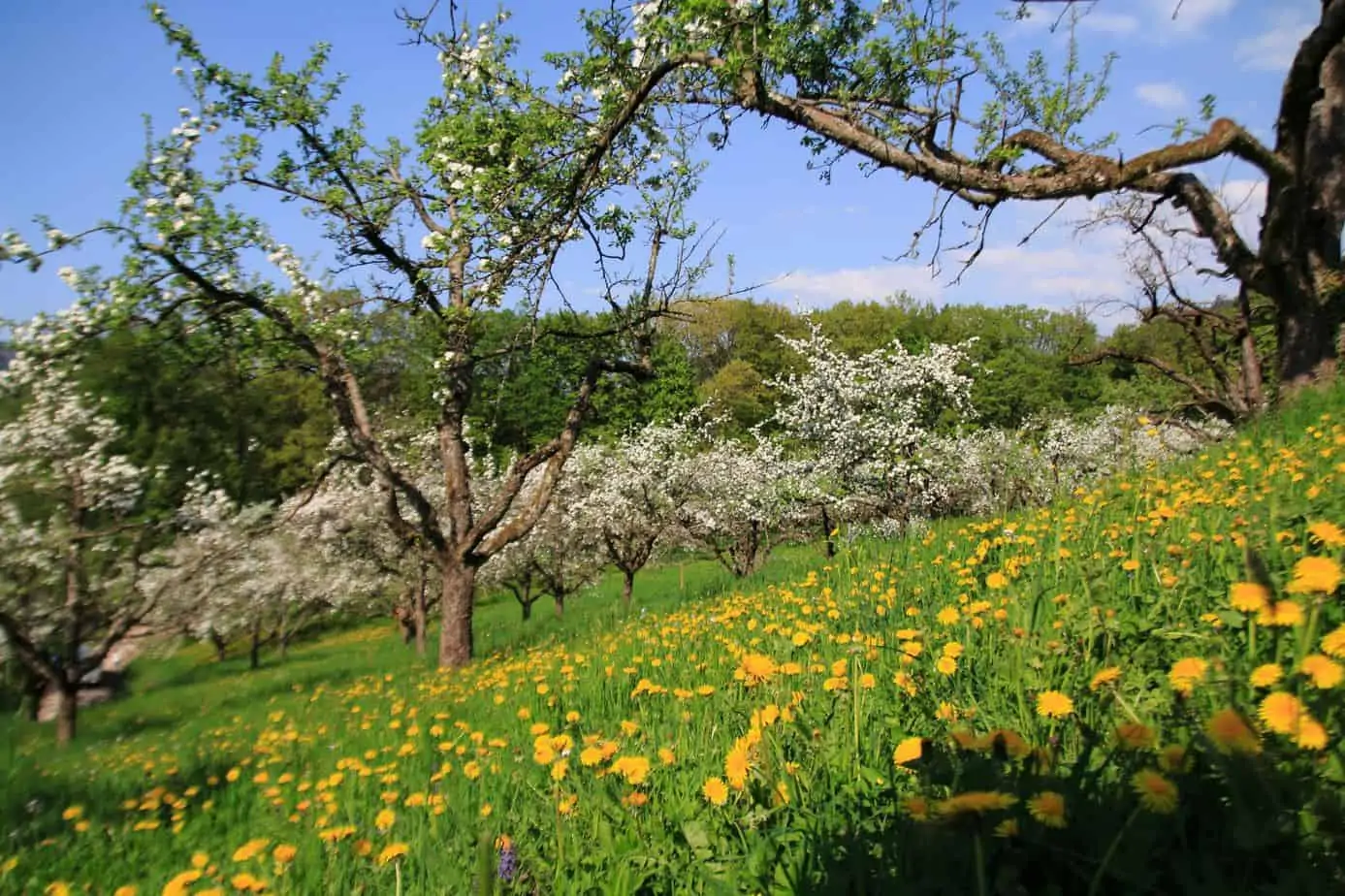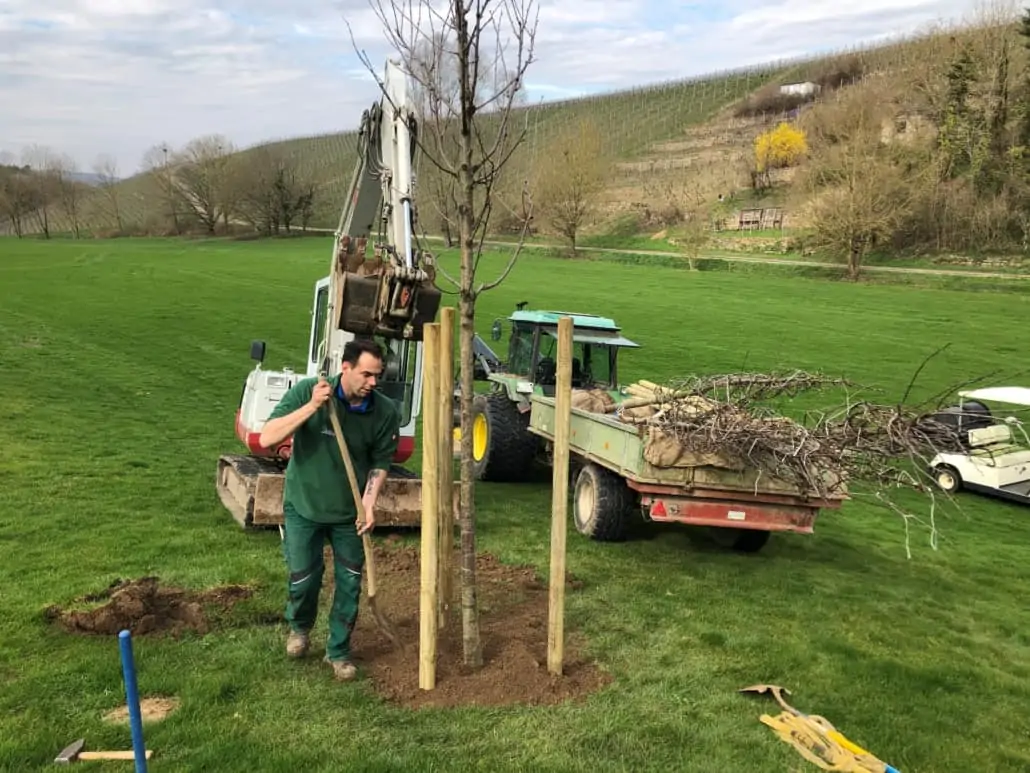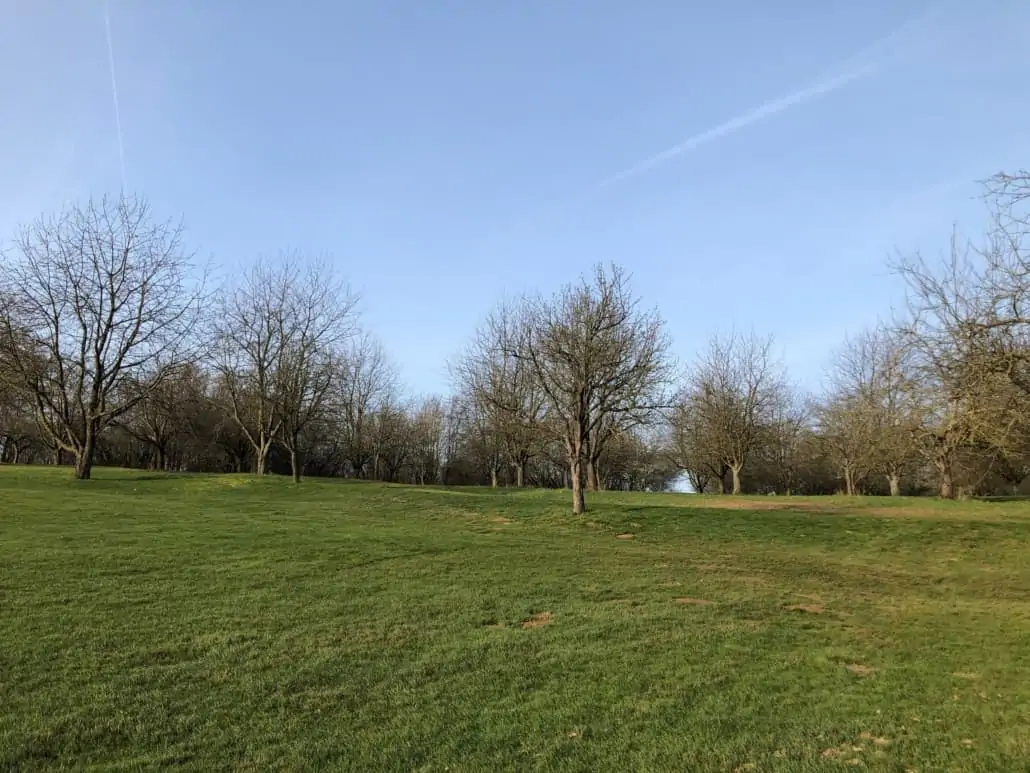Hofkammer.Golf promotes orchard cultivation and biodiversity
Whether Brettacher, Boskop or Gewürzluiken: all these types of fruit trees can be found on Germany’s golf courses – for golfers, the view of the blooming meadow orchards is always a visual highlight, especially in spring. The cultivation of orchards in Germany has now been declared an intangible cultural heritage by the German Commission for UNESCO . The Baden-Württemberg association Hochstamm Germany had already submitted the application in 2019.
There is also enthusiasm about the decision at the golf courses in Baden-Württemberg, some of which are also very committed to the preservation and promotion of orchard cultivation. “We work together with the local horticultural associations on our courses and attach great importance to promoting the local varieties,” explains Marc-Frederik Elsäßer, for example, who is in charge of the overall management of the Schönbuch, Monrepos, Domäne Niederreutin and Schloss Liebenstein golf courses . “In Monrepos Castle , for example, we only plant varieties from the district of Ludwigburg,” he says, summing up the efforts of the golf course, which is part of the green oasis of Monrepos. The fruit tree commitment is to be expanded even further: a project for environmental education is being considered, which will bring hikers on the planet trail closer to orchard cultures.
Fruit tree educational trail on the Schönbuch golf course
A corresponding project has already been implemented at the Schönbuch golf course. Marcel Gallmayer , managing director of the golf course, points out courses on the subject of educational and maintenance pruning of fruit trees on the golf course, as well as the public fruit tree nature trail. There are a total of 361 fruit trees on the 125-hectare golf course. “Together with our own 13 bee colonies on the golf course, this creates a valuable natural symbiosis,” explains Gallmayer. The Schönbuch golf course, which was awarded Gold in the Golf & Nature certification program of the German Golf Association, has already achieved a great deal of success with this form of environmental education, including among young people at the golf course and school classes.
Use meadow orchards to retain members
The activities of the Domain Niederreutin golf club clearly show how strongly orchard meadows can also be used for the golf courses themselves to attract members. Here, the greenkeeping team under the direction of Josef Reiß tends around 200 apple trees, 80 pear trees and 50 plum trees. Some of it is processed into organically certified apple juice and sold to members, among others. In 2020, around one tonne of apples produced 600 liters of juice. The promotion of orchard stocks is also only one part of the nature conservation commitment of the club, which has also been certified with Gold at Golf & Nature since 2011 and, like all other golf courses of the Hofkammer property company, also participates in the initiative “Habitat Golf Course – we promote biodiversity in Baden- Württemberg Golf Association.
Overall concept for more biodiversity
For Holger Meyer , managing director of the Schloß Liebenstein golf and country club in Neckarwestheim, the promotion of orchard stocks is part of an overall concept, as is the case for his colleagues: increasing biodiversity as a whole is particularly important to him, the “functional contact between the habitats must be given”. The meadow orchards are one of them.
Incidentally, the success story of orchard cultivation in Germany in terms of World Heritage should continue: The Hochstamm Deutschland eV association wants to tackle a transnational, European cultural heritage application.









